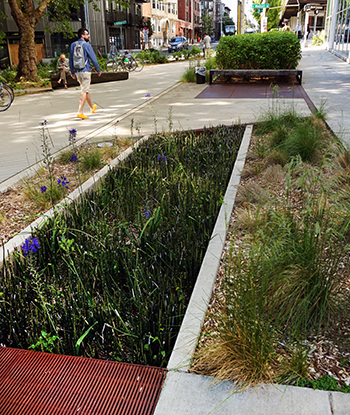
A drought emergency for half of Washington State was declared in April and expanded in May. The drought is expected to impact the Olympic peninsula, the North Cascades, the eastern Cascades and southwest Washington. Seattle, Tacoma and Everett may also experience moderate drought.
Water scarcity has been in the news around the world. In 2018, Cape Town, South Africa, declared that “Day Zero”—the day they would run out of municipal water—was only 90 days away. While such a scenario may not be imminent in western Washington, attention to overconsumption is still important. Population growth will inevitably create areas in the world where the “fixed” water supply system cannot keep up with the demand. That’s why it’s important to understand our impacts and work to reduce our footprint.
We all have some concept of our daily, personal water use: running a tap, taking a shower, watering plants, and so on, but we may not know the local and global water impacts of common products and activities. For example, according to the Water Footprint Network, it takes a lot of water to produce gasoline: about three quarters of a gallon of water for each mile. So your drive from Seattle to Portland consumes not only gas, but about 130 gallons of water. The Water Footprint Calculator also tells us it takes 22 gallons of water to make a pound of plastic, 2,108 for a pair of jeans, and 3,190 for a smart phone. Examining these hidden water uses helps us understand the true value of water to our lifestyles and what a precious resource it is.
The average American uses 2,220 gallons of water a day considering both direct and indirect uses. Use this calculator to find your basic water footprint and to learn a few new tactics to conserve water.
On a larger scale, net-zero/green buildings give another opportunity to conserve water. The Department of Energy website has extensive information on net-zero strategies including:
- Reducing demand by employing innovative technologies that consume less water.
- Producing alternative water sources to offset purchased freshwater.
- Treating wastewater on-site and reusing or injecting treated wastewater into the original water supply.
- Implementing green infrastructure by infiltrating stormwater to the original water supply.

One notable net-zero building is the 52,000-square-foot, six-story Bullitt Center in Seattle. A white paper about its rainwater-to-potable water system details lessons learned, processes and challenges. The building also has a gray water system, which infiltrates clean water back into the ground to recharge the local aquifer. About 500 gallons a day from sinks and showers is stored in a gray water tank and cleaned in a rooftop constructed wetland before being discharged below the surface of a planting area in the right-of-way.
Another example is the 277,500-square-foot San Francisco Public Utilities Commission building, a 13-story Class A office building, which reduced water consumption by more than 60 percent using two strategies: harvesting rainwater for exterior landscaping irrigation (using a 25,000-gallon cistern), and reclaiming and treating wastewater (5,000 gallons per day) in its Living Machine.
The Alliance for Water Efficiency points out typical water-use efficiency categories in many green building programs:
- Plumbing fixtures and fixture fittings
- Residential appliances (clothes washers, dishwashers)
- Water treatment equipment (softeners, filtering systems)
- Landscape & landscape irrigation
- Pools, fountains and spas
- Cooling towers
- Decorative and recreational water features
- Water reuse and alternate sources of water (gray water, rainwater and stormwater, cooling condensate and cooling tower blowdown, foundation drain water)
- Specialty processes, appliances and equipment (food service, medical, laboratories, laundries, etc.)
- Metering & submetering
- Once-through cooling
- Vegetated green roofs
- Building water pressure
A final thought to leave you with: After you calculate your water usage and strategize on how to reduce it, how will you impact others beyond yourself? How you ask for participation makes a difference. This article from Fast Company talks about the use of social comparison to change behavior.
Image: At the Bullitt Center, a planting area in the right of way infiltrates gray water, and a rain garden manages surface water. Photo by Rachael Meyer.
This article was written by NAIOP Washington State and Sustainability Committee member Susan Kemp, Marketing Manager, Hart Crowser
